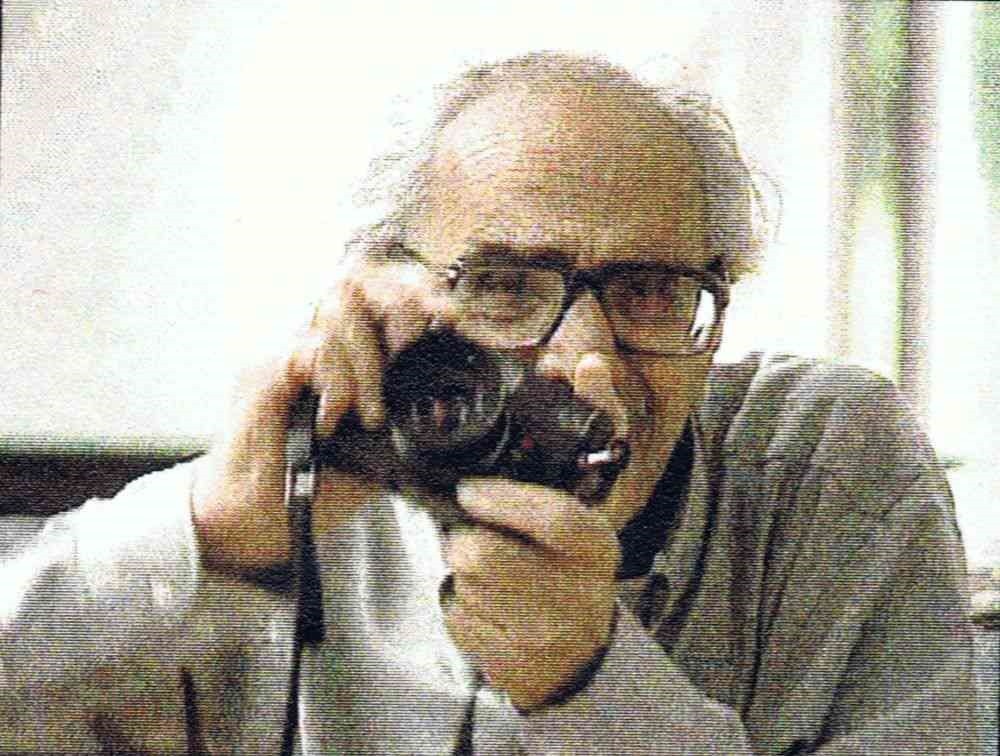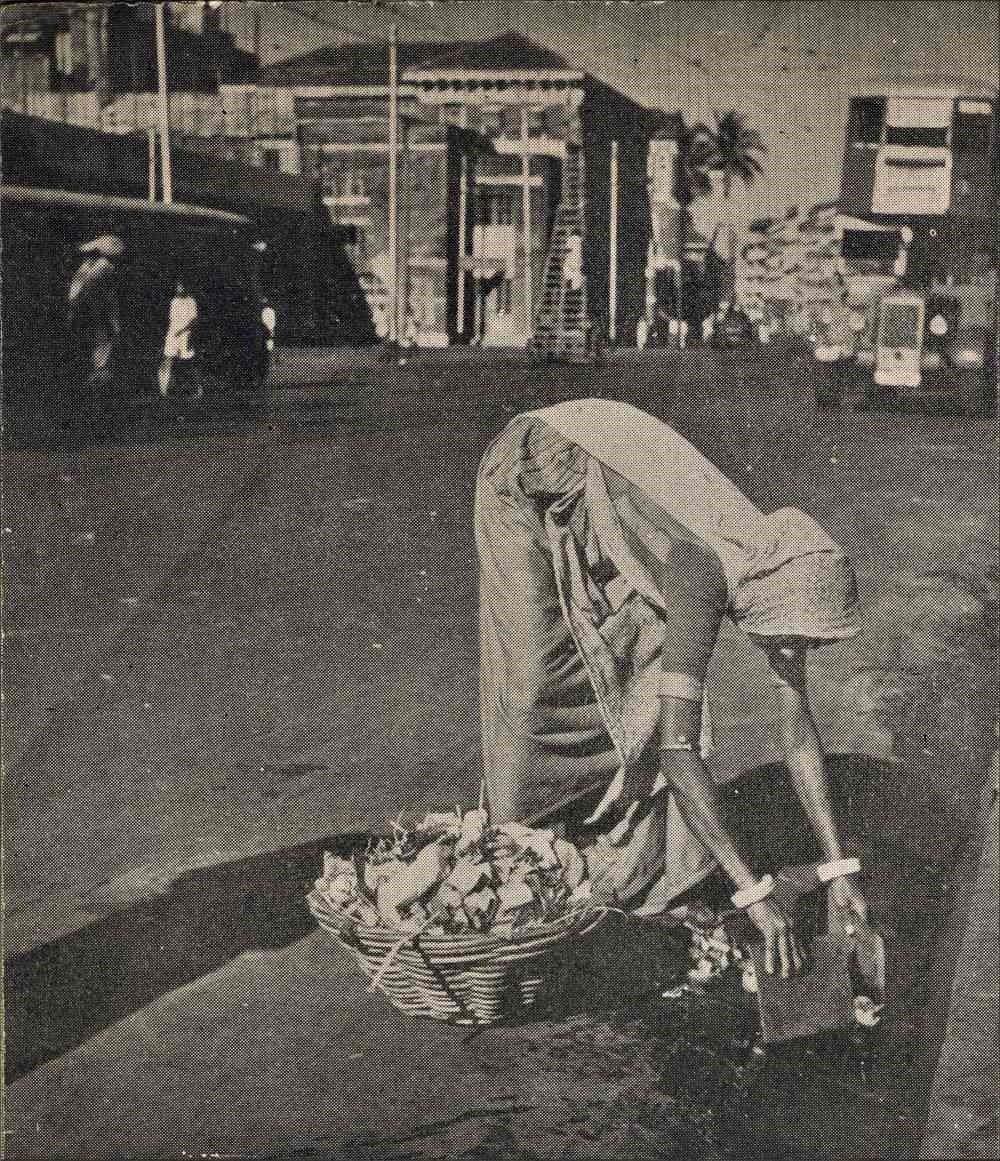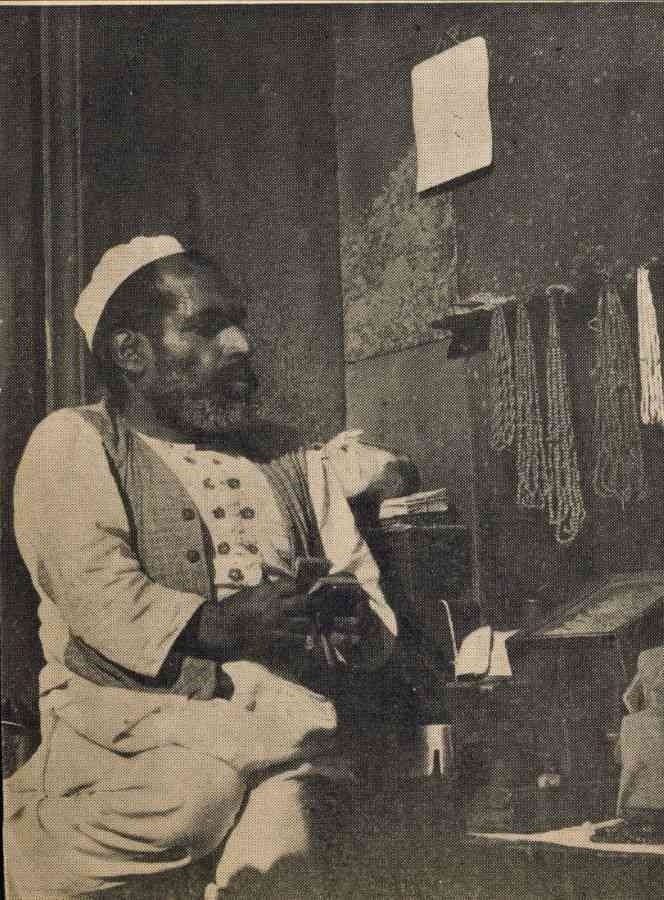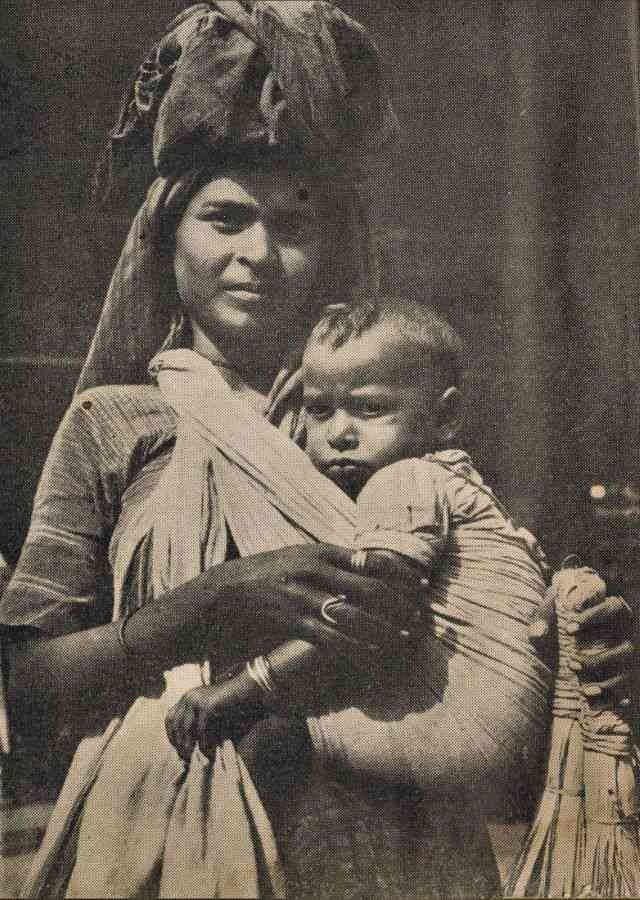Remembering Sam Tata, the photographer who was equally at ease on the street and in the studio
Between taking portraits of everyone from Prithviraj Kapoor to Leonard Cohen, Tata teamed with Henri Cartier-Bresson to capture a snapshot of the 20th century.
Article by Kamayani Sharma Scroll.in
In 1949, China was experiencing historic upheaval as a long-raging civil war came to an end. The conflict between the insurgent Chinese Communist Party and the dominant Kuomintang finally concluded with the Communist Party’s official proclamation of the People’s Republic of China and the Kuomintang’s retreat to form the Republic of China, also called Taiwan. Perhaps the most famous photographs of this turbulent moment are the ones featured in Henri Cartier-Bresson’s China in Transition, originally shot for Life magazine. Often accompanying Cartier-Bresson on the streets of Shanghai was another photographer with his Leica – a local resident of Indian descent, called Sam Tata. His pictures of this period offer a rare glimpse into how the change of regime was experienced by the average Shanghainese.
Ann Thomas, assistant curator at the erstwhile Canadian Museum of Contemporary Photography (since absorbed into the National Gallery of Canada), who organised End of an Era: Shanghai 1949 – a touring North American exhibition of Tata’s work in the 1980s and 1990s – described it as “the only visual record of the actual arrival of the Communists in Shanghai that I’ve come across”. Had it not been for Tata’s brief stint in India and a chance meeting in Bombay with Cartier-Bresson, this corpus of photographs might have taken a different shape.
Sam Tata. Courtesy Toni Tata.
Sam Tata was born in 1911 in Shanghai to a family of wealthy Parsi industrialists (distant cousins of the Indian business family by that name) who had shifted from India to China in the early 20th century. After studying business at the University of Hong Kong, in the mid-1930s Tata took up photography, a hobby he shared with his father. Apart from Chinese peers Chin-San Long and Liu Xucang, the two figures who influenced the young Tata’s development as a lensman were American photojournalist Alex Buchman, whom he met at the Shanghai Camera Club, and Latvian portraitist Oscar Seepol.
In a 1988 interview, Tata credited Buchman with urging him to buy a Leica: “I began taking photos and did a photo series on Chinese actors but my first real work was in the streets.” This was against the backdrop of a volatile political situation intensified by the takeover of Shanghai in 1937 by Japanese troops on the march towards Second World War. Recalling the dark days of Japanese occupation, Tata claimed, “My first good photograph is my friend…and his…wife…on a rooftop watching the bombing of Shanghai by Japanese planes…”
Sam Tata
Open-air Library, 1949 pic.twitter.com/PHGLpuWHn5
— Mitch68 (@Mitch6813) August 25, 2021
As it became increasingly dangerous to venture out, Tata and other Shanghainese photographers withdrew indoors, to focus on portraiture. Apart from the Leica, Tata now used medium-format cameras “a 2 ¼ by 3 ¼ Graflex on a tripod,…floodlights for still life, and a 3 ½ x 4 J.H.Dallmeyer Junior Classic”. During this time, Tata learned the techniques of studio photography from Seepol, who had been associated with the Hamilton Studios in Bombay and knew the eminent Indian pictorialist photographer Jehangir Unwalla. “Oscar Seepol…taught me a lot about studio photography, how to develop films well, mix the chemicals and make good prints,” he said.
In his essay ‘Sam Tata: Eye of the Observer’ for the catalogue of The Tata Age/ L’Epoque Tata (1988), a retrospective at the erstwhile Canadian Museum of Contemporary Photography, curator Pierre Dessureault writes, “To his mother’s chagrin, he [Tata] converted a small room in the new family home into a crude darkroom…he staged genre scenes inspired by the history of art or The Arabian Nights…These expertly orchestrated compositions required painstaking construction of the image: each element was photographed separately, then reproduced on a paper negative which was carefully retouched to create a seamless blend of the parts.”
This highly formal approach to photography, the mainstay of the pictorialist aesthetic that privileged the camera’s expressive capacity for approximating fine art, propelled Tata towards portraiture, for which he became known later, in his Canadian career during the latter half of the 20th century.
Shanghai, before the end of an era, May 1949,by Sam Tata. pic.twitter.com/U4enTrRzVd
— Tong Bingxue 仝冰雪 (@tongbingxue) April 6, 2022
With the experience of photographing both on the streets and in the salon, Tata looked West – to India. Though he had taken many trips to the country with his father, the two years he spent in Bombay beginning 1947 seem to have resulted from the desire to explore his ancestral roots. Like Seepol, Tata came to engage with Unwalla and other city photographers. In a December 1949 article for Marg titled ‘Photography in India and the Far East’, Tata discussed the work of Indian pictorialists and documentary photographers like Shapoor N Bhedwar, JS Tarapore, Unwalla, NJ Nalawalla, FR Ratnagar, Jayant Patel, AL Syed, RA Bacha and Sunil Janah, evincing that he had become conversant with his contemporaries’ practice while in Bombay. His own work received a positive response that nevertheless suggested that he had yet to realise the extent of his craft. Reviewing his work at the seventh all-India exhibition of photography, The Times of India’s art critic Rudy von Leyden noted, “As always, I liked Sam Tata’s powerful portraits, although…I find too many outward effects and not enough inward penetration.”
According to Dessureault, “Tata’s first solo exhibition, sponsored by the Bombay Art Society, was held in November 1947 in a Rampart Row gallery. Unwalla…presided at the opening of the show, which included sixty portraits and genre scenes.” According to his daughter Toni, during this time he became friendly with other artists, such as Shiavax Chavda and MF Husain (who would exhibit his work at the Bombay Art Society’s Salon as part of the Progressive Artist Group’s first show in 1949), as well as the Sri Lankan artist and writer Anil de Silva.
He soon became part of Bombay’s thriving cosmopolitan cultural scene, which was similar to Shanghai’s in its mix of local and emigré members, some of whom would go on to sit for him, such as writer Mulk Raj Anand, actor Prithviraj Kapoor (whom he also shot in the play Pathan), artist and critic Walter Langhammer and, eventually, Cartier-Bresson himself.
© Sam Tata. Courtesy Toni Tata.
In the third week of February 1948, Sam Tata met Henri Cartier-Bresson at the Bombay Art Gallery’s Salon on Rampart Row: “…a magazine called Pop Photography…had a feature article on Cartier-Bresson that quite intrigued me, so I went to the show…I was introduced to him and took that rather well known portrait of him with sandals in a safari jacket, one of many portraits I took at that time.” One series of portraits, titled ‘Spotlight on Six Prominent People’, included Anand, Kapoor, industrialist JRD Tata and Chief Justice of the Bombay High Court MC Chagla.
Tata’s way of making portraits involved many considerations. For example, commenting on his portrait of Walter Langhammer, he mentioned how, by having him sit with one of his paintings in the backdrop, he managed to capture “the expression…peculiar to the artist when weighing up the progress of his paintings”.
Toni provides further insight into her father’s process as articulated by him to the family: “His portraits were compositions of conversation between himself and the individual being photographed, in the manner they wished to be photographed and the space they wished to be photographed in.” Tellingly, John Metcalf in his essay ‘Conversations Without Words’ for the The Tata Age catalogue informs us, Tata termed the photos featuring domestic interiors that reveal the sitter’s personality “environmental portraits”.
In the summer of 1948, Tata’s series titled ‘Native Land’ featured in another magazine called Trend, largely comprising portraits of Indians whom Tata came across in public spaces. Photos of vendors, porters, hawkers, roadside shopkeepers, buskers, people asking for alms – all of these protagonists appear as part of a South Asian urban context in Tata’s photos from the 1940s. Perhaps understandably, Tata does seem to have looked at India through the lens of an outsider. He describes being struck by its religious fervour and “exotic” quality, which is an assertion hard to divorce from his images of the country. Today perhaps these images might be seen as conforming to an ethnographic gaze indicative of a colonial typology. Yet, as in the case of formal portraits, with the candid framing of his subjects at ease in their own domain, Tata manages to render them as distinct individuals who are part of a vital and complex social landscape.
In 1949, Tata returned home to Shanghai. His friendship with Cartier-Bresson and their joint expeditions shooting on the streets of Bombay (which he termed “foot-slogging”) greatly impacted his work, urging him out of the studio once again. Cartier-Bresson stayed at the Tata’s Shanghai home (whose property deed he photographed, as the People’s Liberation Army was entering the city) for five months in 1949, during which time the two of them would go out with their Leicas into the tumult of the city. Similar to Cartier-Bresson’s big picture chronicles, albeit less self-conscious, Tata’s straightforward and sympathetic observations of this moment playing out in the everyday life of Shanghai are informed by his familiarity with his hometown and the people he shared it with.
A coolie woman walks the streets of Bombay in monsoon with an umbrella, c.1948.
Photographer Sam Tata. Source: National Gallery of Canada #bombay #Mumbai #bombayrains #MumbaiRains #streetphotos #history #historypics pic.twitter.com/Rdk54GO6Un
— The Paperclip (@Paperclip_In) November 13, 2021
The sensitivity to the social that Tata had sharpened in India is apparent in images of citizens reacting to a situation they had little control over – a child awaiting his parents in a basket, an amputee soldier writing on the pavement, evacuees departing, workers, shopkeepers and leisure-takers going about life as history happened. Looking back many years later on the events of 1949, he said, “I was in my city of birth, I had a camera, and I just never left the house without it…I just photographed…I didn’t avoid anything or seek anything out.” In Tata’s opinion, the purpose of photojournalism was to capture human reality and individual experience as it was, not embellish it. In an interview with Dessureault, he explained, “The function of a photojournalist is to observe and record. One can never be objective…the photographer being a human being…But it is possible not to take sides, not to use the camera deliberately as propaganda…”
Ironically, it was precisely concerns around the representation of the 1949 revolution that led to Tata’s photographs being out of sight for more than two decades after he originally took them. “Of course, the Communists wanted to see everything we printed,” recalled Tata, “So he [Cartier-Bresson] and I got into a darkroom and I processed…negatives and made contact sheets….” Dessureault gives an account of how differently the principle of censorship affected the two photographers, one a world-renowned Frenchman on assignment with Magnum Photos, and the other a little-known Indian Shanghainese.
While most of Tata’s negatives had to be smuggled out by an embassy official (a few were dispatched to the New York-based Black Star agency), Cartier-Bresson’s contact sheets were allowed to leave China without problems. Later, in 1952, when Tata left Shanghai forever, the Chinese government was even stricter: “On the grounds that they constituted an insult to the Chinese people in their uncritical depiction of the old world of traditional activities…many of Tata’s early photographs were seized. Only a few rare negatives of his work from the 1930s escaped the censors’ zeal.” It wasn’t until 1970 that the Shanghai negatives were retrieved by Ron Solomon of Canada’s National Film Board who curated what would, in 1981, become the travelling exhibition The End of an Era (published as a book in 1990).
© Sam Tata. Courtesy Toni Tata.
© Sam Tata. Courtesy Toni Tata.
The experience of shooting Shanghai in 1949 seemed to have been a decisive moment in Tata’s approach, leading him to pivot away from the pictorialism of his early career and to destroy his older work in the 1960s. In an interview with Dessureault, he said, “I desired no longer to be an etcher or a painter with my camera, which is an instrument…of…a kind of rhythmic realism integrating composition and a reasonable technique…” Tata applied this understanding of photography on his next trip to India in 1955, when he photographed the Amarnath Yatra in a photo essay titled ‘Himalayan Pilgrimage’, originally commissioned by Life and later published in National Geographic (October 1956) when the former “decided they [the photographs] had too much religion and didn’t want it”.
The series includes wide-angle landscapes of Kashmir’s mountains, the architecture of Srinagar, Hindu pilgrims, Muslim mosque-goers and, of course, scenes of Kashmiri life. On the same trip on which she accompanied her father, Toni remembers that they went to Jaipur, Delhi, Amritsar and Bombay, taking snapshots along the way: a priest blessing the faithful in Jaipur, devotees at the Golden Temple, Amritsar and a crowd milling at the steps of Delhi’s Jama Masjid. In keeping with his philosophy to “be alive to what is happening”, Tata’s awareness of the surroundings and his ability to frame people in the comfort of their milieu rescues the work from falling prey to tropes of the mysterious East.
By the 1980s, Tata had established himself as one of Canada’s leading portraitists, having photographed eminent figures from that country like writer Alice Munro, musician Leonard Cohen, filmmaker Norman McLaren and actors William Shatner, Donald Sutherland and Christopher Plummer. In 1983, his work over 25 years culminated in a book called A Certain Identity: 50 Portraits. In the same year, Tata visited India for the last time, “disappointed” by what he perceived as a decline in living conditions.
From this trip, there is a picture of him taken in 1984 at Mahalaxmi, by photographer, filmmaker and screenwriter Sooni Taraporevala, hinting at the broader social and cultural networks that he continued to be part of, even as a diaspora artist. Toni confirms this: “I do know on that trip he did portraits of Sooni, [photographer] Raghu Rai, [cartoonist] RK Laxman, [artists] Jehangir Sabavala and KH Ara, [actors] Jennifer Kendall Kapoor and Shashi Kapoor, [writer] Khushwant Singh…[poet] Nissim Ezekiel.”
In 1990, Tata was awarded the lifetime achievement award by The Canadian Association of Professional Image Creators. He passed away in British Columbia in 2005. Spanning six decades and two continents, Tata’s practice evolved through different stages and styles. Even though Tata’s best-known photographs belong to China and Canada, the role that India played in this evolution, perhaps by circumstance more than design, is worth speculating on.
The writer would like to thank the following for their help: Andrea Kunard and Josée-Britanie Mallet at the National Gallery of Canada, John Shoesmith and Olivia White at the University of Toronto, Maggie Hunter at the University of Calgary and independent photographer and historian Don Denton.
Kamayani Sharma is an independent writer, researcher and podcaster based in New Delhi. She is a Kalpalata Fellow in Visual Culture Writing for 2022.




